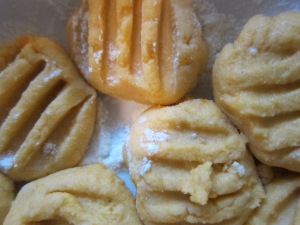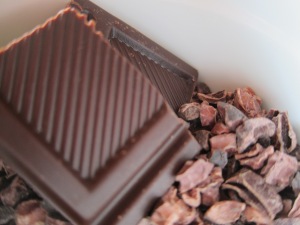This post is a bit unusual for me. A few months ago I bumped into Isabel, a lady who has set up a family business in her home, making and selling chocolate. This isn’t just any old chocolate: this is home-made, nutritious, delicious chocolate and it is made just up the road from me near Bicester in Oxfordshire.
As you will know already if you’ve read some of my previous posts, I have a bit of a sweet tooth but I know what refined, processed sugar can do to the body so I’m always on the lookout for clean eating treats and recipes that use natural, non-processed and health boosting ingredients. I was so excited to meet Isabel and to discover that someone local to me shared the same ideals and values as I did and had turned it into a business. I rushed out to buy a bar of her chocolate and I can confirm it is delicious.
I decided I had to interview Isabel and share her story with you all. If you’re anything like me, you’ll want to run out and buy Isabel’s chocolate as soon as you’ve finished reading this…which is quite lucky really because we all know chocolate is good for us. See my previous post here if you don’t believe me!
So here it is, an interview with Isabel, owner and creator of The Chicken Shed.
Tell me a bit about The Chicken Shed. What do you do and what makes your chocolate special?
The Chicken Shed is Enrico (the man who makes the chocolate), me (I look after the website, the look and feel of our products and most of our customer contact), Ella (10 – she’s a great sales lady!), and Maya (7, fellow taster with Ella). We involve the children in most aspects, from testing new flavours to how our packaging looks, and they help us get ready for markets.
We make chocolate bars in 8 flavours at the moment (but more to come!), hot chocolate, and Belgian chocolates exclusively for Deddington Farmers’ Market as well as seasonal chocolate items. Our chocolate is organic, dairy-free and is made with raw forest honey rather than refined sugar. We also work the chocolate at lower temperatures than normal so as to ensure that we don’t “cook away” all the nutrients. Technically you’d class it as raw.
Tell me about the ingredients. What’s healthy and good about them?
All our chocolate is organic. It’s made with raw honey rather than refined sugar, so the GI is much lower, plus it boosts your enzyme and antioxidant levels. We deliberately keep the temperatures low when making our chocolate so that the nutrients stay intact. We’re careful about the ingredients we choose – if it’s over-processed, or has little or no nutritional value, it doesn’t make it in. For example, we could have made our hot chocolate with conventional cornflour as a thickener, but we opted for purple cornflour instead. Purple cornflour contains an antioxidant called anthocyanin which a study by the State University of Ohio has shown to have amazing cancer busting properties: during the study, researchers found that anthocyanins extracted from purple corn killed 20 percent of in vitro cancer cells, while leaving surrounding tissue relatively unharmed.
One of your major selling points is that your chocolate is sugar-free. Why is this so important to you?
Refined sugar is just full of empty calories. We all know it doesn’t do your body any good, in fact there is research that suggests it feeds cancer cells. Why eat what the media are calling “poison” when there are healthy alternatives out there? We didn’t want our chocolate to taste like an alternative though! We wanted it to taste amazing, so you still feel like you’re treating yourself, but you’re actually doing yourself some good (as part of a balanced diet of course).
Have you always been interested in health and nutrition?
To some extent, yes. I became vegetarian when I was 18 (for ethical rather than health reasons) – I was still living at home at the time – and my Mum was really against the idea because she was worried I wouldn’t get the right nutrients in my diet. It made me focus more on having a balanced diet. Having children increased that focus. They’re vegetarian too, and I wanted to make sure that, without meat and fish in their diets, they would grow up healthy.
Then, about 3 years ago, I became friends with Ellie Bedford who is now a raw food nutritionist. She introduced us to the concept of baking and cooking without refined sugar and white flour. We did our own research on the health issues linked to those two ingredients, and – now armed with healthy alternatives – decided to ditch sugar and white flour (and co-wrote the healthy desserts book with her).
Aside from avoiding refined sugar, what other healthy foods and habits do you try to incorporate into your life?
We don’t use white flour – we tend to use spelt a lot as an alternative. Our overall philosophy is really a common sense one – there are so many different diets out there and they contradict each other – it’s very confusing!
We just trust that nature has things well designed so we eat seasonal foods when we can, get some variety, and we try to not “mess” with food, because a lot of the time, that means you end up taking away a lot of the nutrients. For example, the process of refining wheat into white flour strips away more than half of wheat’s B vitamins, 90 percent of the vitamin E, and virtually all of the fibre.
What’s your favourite meal?
Enrico’s Italian, so we eat a fair amount of Italian food, so I would go for homemade pizza or pasta (made with spelt flour).
What’s your favourite snack?
Our chocolate! Yogurt with fruit and nuts, spirulina Bounce balls, and raw chocolate brownies.
What’s your favourite Chicken Shed flavour/product?
Personally, I think cardamom, but it really depends on my mood. Obviously I like them all, or they wouldn’t have passed our tasting tests 🙂 The children love vanilla, liquorice, and Serious (73%), and Enrico would say liquorice, but they’re all nice!
Where can people find you and buy your chocolate?
We’re online on www.thechickenshed.eu, on Etsy and Notonthehighstreet, and are stocked locally at the Organic Deli in Oxford (www.oxfordorganic.co.uk), the Natural Health Store in Banbury, Uhuru in Oxford, the Duck’s Pantry in Hardwick and the Beanbag in Witney. The Varsity Club in Oxford sells our little chocolate eggs. We’re also regulars at Deddington Farmers’ Market and North Parade Market.
What is the future like for The Chicken Shed?
Well, we have a new flavour about to hit the market: Honey and Bee Pollen, which is exciting. We’re looking to expand, so hopefully more stockists. We’ve only been going for about half a year and in that time have changed the look of our packaging and almost doubled our range. Although we’re ambitious to grow, I’m hoping to get more balance in our lives as we do that. Not quite sure how yet, but I’m working on it!



